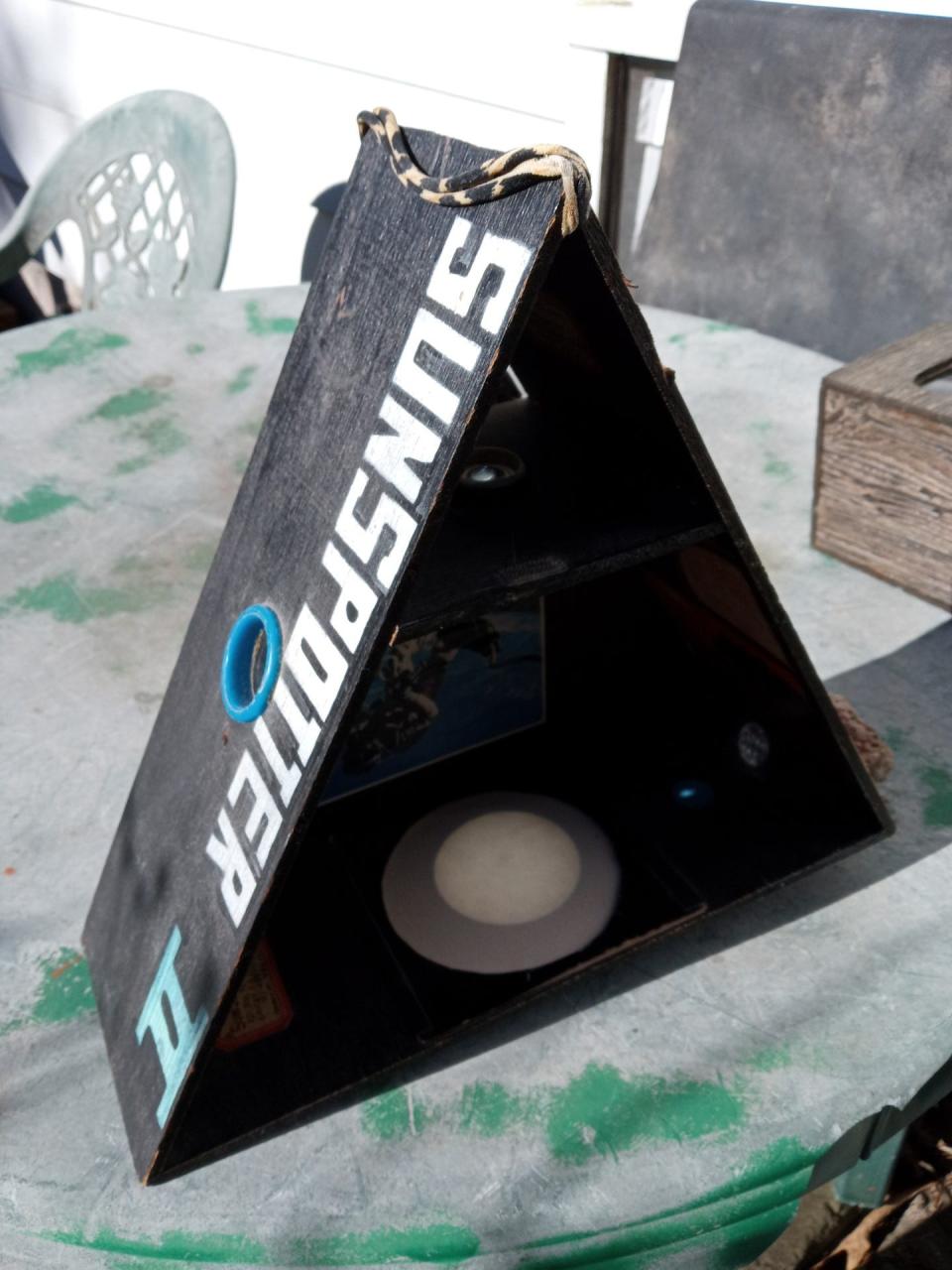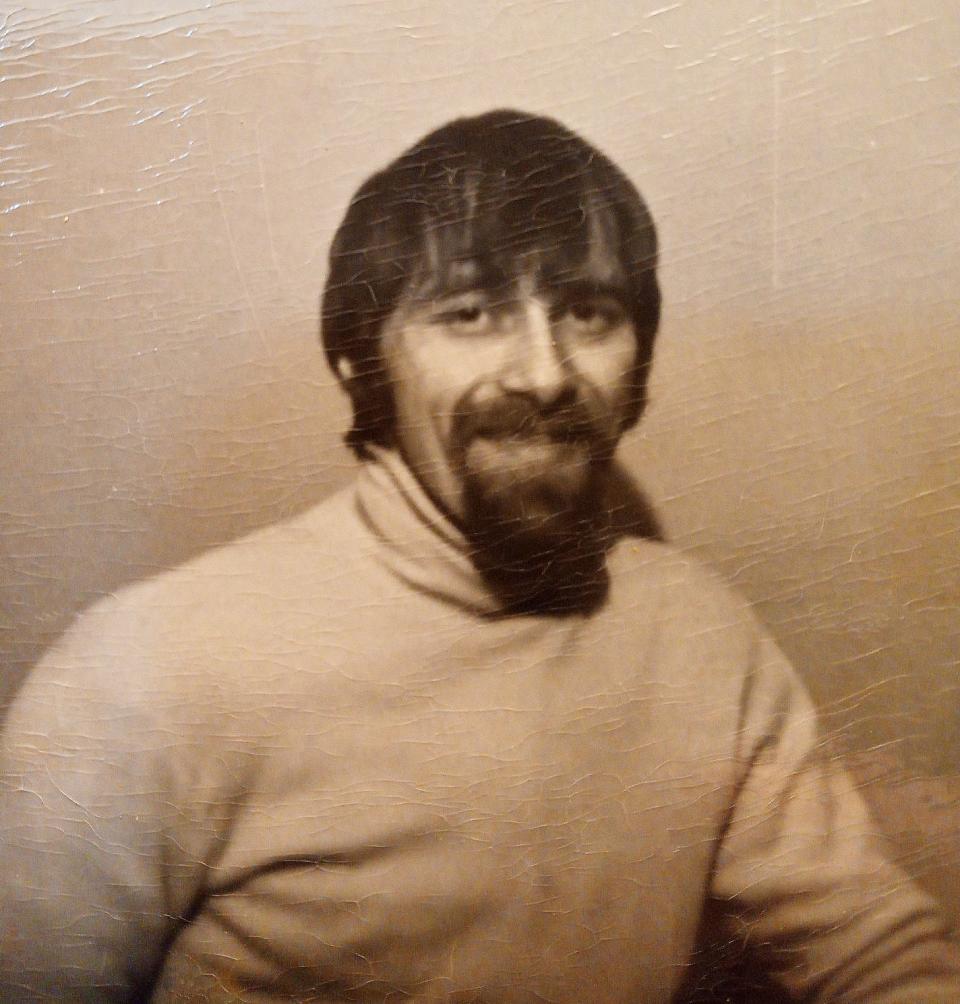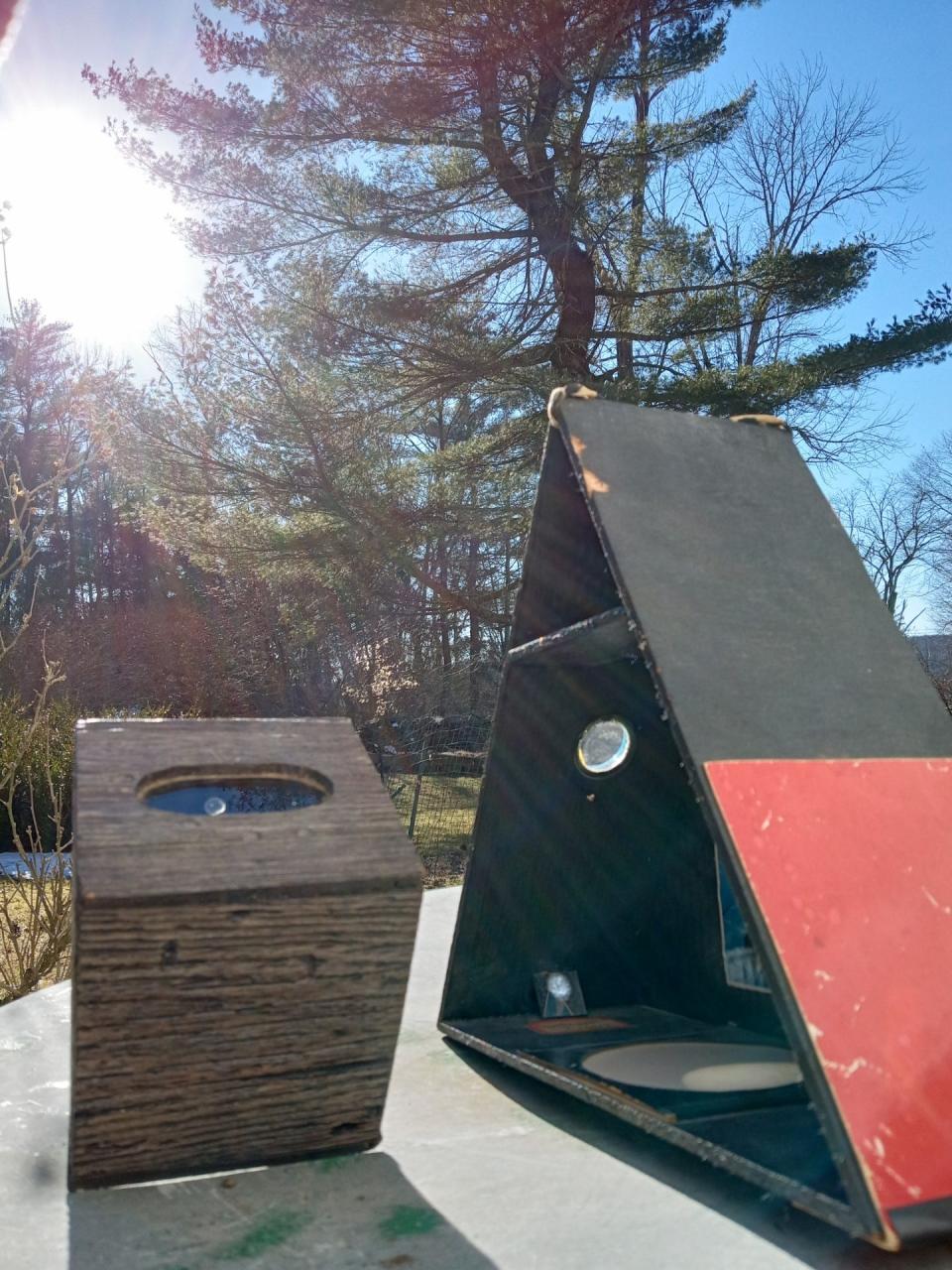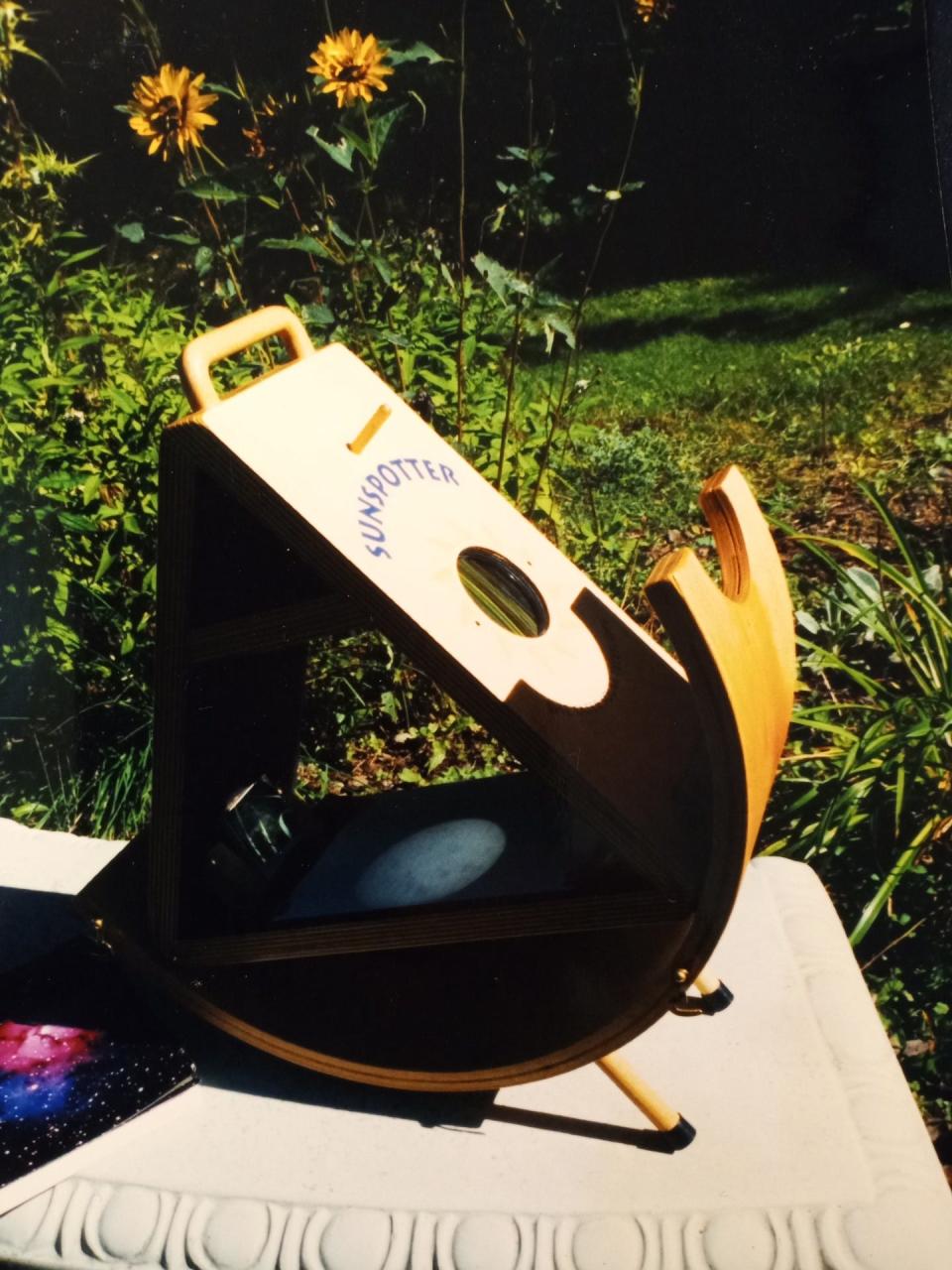Late Pike County man patented the Sunspotter, a safe way to view the sun, eclipses
Editor's note: Sunspotter inventor Daniel Janosik Sr. and reporter Peter Becker were good friends.
He was a man of limited formal education and means in this life, yet the late Daniel "Danny" R. Janosik Sr. of northern Pike County left a legacy that no doubt will be front in center at numerous gatherings April 8 to watch the solar eclipse.
Over 40 years ago he invented the Sunspotter, a unique device for safe and easy observation of the sun and its sunspots that march across the solar surface, as well as the rare eclipse. His patent has long since been sold. An improved version of his invention is sold by several outlets nationwide.
He built his Sunspotter for years with help from his family in their backwoods house in Lackawaxen Township. He also did all the marketing and selling.
It began in 1978 when Janosik assembled his first version of the Sunspotter. It was a simple wooden cube painted black inside and with a glass convex objective lens on one side and a viewing portal on another. He would aim it at the sun and, using a series of mirrors and another lens inside the box, a projected image would appear on a piece of white cardboard inside, seen through the portal.

This version, however, only allowed one person at a time to look at the sun's projected image.
As far as he knew, that was the first time there was a way to safely inspect the sun's surface by the common person, without using solar filters or the cumbersome method of holding white cardboard behind a regular telescope, still having the risk a child might try to get in the way and peek through the eyepiece.
Janosik's feat is further enhanced knowing that he endured a physical disability and did not have the college education many others take for granted. He was born in 1944, of Czechoslovakian heritage. As a child he moved up from New York with his family, to live in the Hawley area. He graduated from Wallenpaupack schools. He dealt with an inherited disability that affected his fingers and feet which failed to stifle his creative energy and passions.
Janosik loved astronomy and physics, and had a curious, inventive and imaginative mind. He meticulously kept a diary, alternating entries with red and blue ink. He was artistic, resourceful and a genius at recycling to make new uses from something old.
In fact, he used recycled materials in his Sunspotters, some of which he salvaged from sweepings from Sherman Mill in Hawley, a textile factory where he worked as a janitor.
Despite his disability, in the early '70s he built his own seven-room house in the woods in Bohemia, using mainly his own hands. To better view the stars with his reflecting telescope, he put up a platform in a tree reached by a ladder. He maintained a study loft and skylight in his attic, letting in the sun that inspired him to put his idea to paper.

He and his wife, Dale, had driven down to Virginia Beach in March 1970 to see a total solar eclipse. This must have helped spark his imagination.
He toyed with many other ideas on paper for inventions for more everyday items, but his interest in science brightened into something tangible.
At considerable expense, Janosik hired a patent attorney and confirmed there was no other similar device registered. He filed for the patent on Dec. 26, 1979, and was awarded patent #US-443736-A on March 20, 1984.
Soon he moved to a second version of the Sunspotter. This version, which he named Sunspotter-II, allowed easier group viewing. The Sunspotter-II was built as a triangular box, open on one side.
It is a refracting telescope with three mirrors so that the light path is not straight through a tube from the objective (front) lens to the eyepiece but is bent three times by the mirrors, confined to this telescope's unique triangular shape.

Janosik assembled them himself and sent handwritten letters and postcards to schools all over the country. By 1989, he had built and sold over a thousand Sunspotters, mailing them out. He personally kept up with his growing list of fans, sending them notices about sunspots and receiving words of encouragement back that helped keep him going.
He kept a map on his wall with thumbtacks showing where his invention went.
One time his phone rang at 4 a.m. from a potential customer in Australia.
He liked to set up his Sunspotters at public places, such as Bingham Park in Hawley, just to show people the sun. An interested crowd would gather around and marvel at the sunspots.
Janosik died in 1995. Later, the patent had expired, allowing anyone to take the patent and manufacture the invention. A science education supply company based in Massachusetts, which wanted to manufacture and sell the Sunspotter, on their own initiative contacted Janosik's widow, Dale, and offered her certain royalties for a specific time.
His widow, who has since died, in an earlier interview expressed that she and the family were proud of Danny's accomplishment, and also happy that the firm that bought the Sunspotter kept her personally involved and informed.
The science education supply firm kept the same design, but with optics that create a bigger sun image, and a convenient wooden cradle to hold the device towards the sun.

Today, stamped on the outside of the Sunspotter is the name of the firm Science First, an educational supply business based in Yulee, Florida. The device is made in China.
One of the Sunspotters based on Janosik's design is exhibited in the National Air and Space Museum at The Smithsonian in Washington D.C. His younger daughter Diane and her family visited the museum in 2019, not knowing the Sunspotter was there. She expressed their astonishment to find it on display.
One time Janosik had a chance to sell his idea to another telescope firm, but, dissatisfied with the terms, he declined and kept on making them himself. Janosik never made himself rich from his product. His humble invention outlasted him and lifted his dreams for a legacy in the scientific community. It continues to be popular for astronomical outreach, bringing the science of the sun to people of all ages, a wish nurtured by Janosik.
Viewing April 8 eclipse
Protecting the eyes is crucial to viewing the solar eclipse on April 8.
Safe viewing is readily available, whether using a Sunspotter, commercially sold certified solar glasses, or by projecting the image onto white cardboard from a small telescope or from a pinhole in another piece of cardboard. A pinhole viewer is easily made from a shoe box with the cover off or mailing tube with a viewing portal cut near the bottom. Paste or tape white paper to the inside end of the shoebox opposite the pinhole, or inside end of the tube opposite the pinhole.
As seen from the Poconos April 8, the sun will be about 95% covered. The approximate times for the eclipse as seen from this region are the beginning at 2:09 p.m., maximum at 3:24 p.m. and ending at 4:35 p.m.
It will reach totality along a narrow path in the United States, passing north of Wayne County in central New York.
Please send your reports of the coming eclipse to this writer, for a follow-up story.
Peter Becker has worked at the Tri-County Independent or its predecessor publications since 1994. Reach him at pbecker@tricountyindependent.com or 570-253-3055 ext. 1588.
This article originally appeared on Tri-County Independent: Sunspotter eclipse viewer invented by Pike County's Daniel Janosik Sr.
